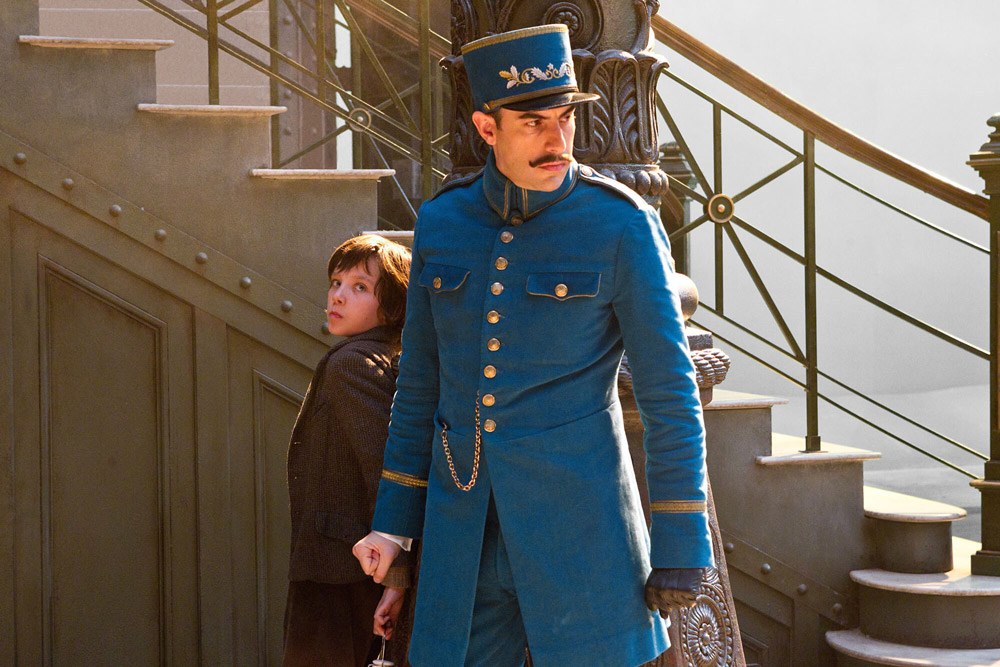
(C) 2011 Paramount Pictures. All Rights Reserved.TM, (R) & Copyright (C) 2013 by Paramount Pictures. All Rights Reserved.
``Hugo'' Martin Scorsese was actually a 3D enthusiast!
2018.12.03
Different use of CG and real-size sets
When starting Hugo, Scorsese's staff didn't want to work in a virtual environment full of computer graphics. For this reason, production designer Dante Ferretti recreated the Montparnasse station, the main setting of the story, and the steam locomotives that were there in full scale. In particular, the station concourse, the large clock at the entrance, and the clock tower outside are all constructed with working gear mechanisms (*4).
In order to build such a large set, in addition to the UK's leading studios Pinewood and Shepparton Studios, they also use Longcross Studio , which was founded in 2006. Having said that, there is a limit to the size of the stage, and it is also necessary to depict things like the scenery outside the window and people walking in the back of the screen. Therefore, Pixomondo (*5), headquartered in Germany, performs set extensions using green back synthesis. Although ILM helped out with some of the opening three cuts, Pixomondo handled most of the remaining VFX for the remaining 850 cuts.

"Hugo" (C) 2011 Paramount Pictures. All Rights Reserved.TM, (R) & Copyright (C) 2013 by Paramount Pictures. All Rights Reserved.
Rob Legato also worked with NVisage to create a special on-set previsualization system to satisfy Scorsese, cinematographer Rob Richardson , and editor Thelma Schoonmaker . This uses a device called Ncam that can track the movement of the camera during filming from a sensor attached to a gimbal (head) or crane, and synthesizes the set with simple CG created by NVisage in real time. It is possible to imagine. As a result, even staff members unfamiliar with VFX were able to work smoothly without any trouble.
*4 In order to protect the safety of the child actors performing around this area, infrared sensors were installed, and a device was also installed that would apply an emergency brake if they got too close to the gears.
*5 Pixomondo is a VFX production company founded in Frankfurt in 2001. During its heyday, the company rapidly grew to the point where it had branch offices in Stuttgart, Munich, Berlin, Hamburg, London, Toronto, Burbank, Los Angeles, Detroit, Beijing, Shanghai, etc., and most of those studios worked on Hugo... . But since 2012, its Munich, Berlin, Hamburg, London and Detroit offices have closed.
locomotive accident scene
The main character, a boy named Hugo (Asa Butterfield), has a nightmare in which he almost gets run over by a steam locomotive. This scene is a fairly faithful reproduction of the accident that actually occurred at Gare Montparnasse in 1895 , and the scene where the locomotive runs out of control inside the station building was created by Pixo Monde, who combined a CG locomotive with a full-scale set.
On the other hand, for the scene where the train falls through the wall of the station building, New Deal Studio, which also created the spaceship model for `` Interstellar '' (2014), created a 1/4 scale miniature. The background of this scene was painted using matte paintings by Matte World Digital , but unfortunately this was the company's last work.

